Having been depicted on screen over 260 times, Sherlock Holmes holds the Guinness World Record for the most portrayed literary human character in Film and TV. Since his creation in 1887, Holmes has been played by over 120 actors on screen. However, Holmes is not the overall most portrayed literary character in Film and TV. That title belongs to the non-human character Count Dracula, who has been portrayed in over 275 films.
Since his creation in 1897, in “Dracula”, an epistolary novel (the narrative is related through letters, diary entries, and newspaper articles) by Bram Stoker, Count Dracula's popularity has endured, and like Sherlock Holmes himself has become a household name in pop culture. He's had many enemies over the years, usually chief among them Professor Van Helsing (and his descendants), and crossed paths with countless characters across various forms of media, including Sherlock Holmes himself, in books, comics and on stage. [In fact, I may in the future write about this in more detail on this blog].
Stoker was the personal assistant of actor Sir Henry Irving and business manager of the West End's Lyceum Theatre (where Holmes and Watson waited with Mary Morstan in 'The Sign of Four'), which Irving owned. He was a friend of Sir Arthur Conan Doyle, and was at his marriage on 18th September 1907. He also produced the Conan Doyle play 'A Story of Waterloo' in 1897, starring Irving. On 20th August 1897, Conan Doyle wrote to congratulate Bram Stoker on 'Dracula':
"I have enjoyed reading Dracula. I think it is the very best story of diablerie which I have read for many years."
Part of the original novel is set in Whitby (as are some of the crossovers), and it was during a visit to this English coastal town that Stoker undertook some of his research and was inspired to write the novel. Therefore, given this, and a site of Sherlockian interest, a visit was planned as Day 2 of my most recent mega-sojourn.
Catching the X93 bus from Scarborough Railway Station, an hour later I was alighting in Whitby. My first point of call was the same as that of the sanguinary Count, where in the novel, he comes ashore at the headland as a creature resembling a large dog, and runs up the 199 steps to the graveyard of St. Mary's Church. However, I decided to slowly walk up them instead. The steps were originally made from wood and it was not until 1774 that the original steps were replaced with stone from Sneaton. It is thought the 199 steps were used as a test of Christian faith to those who wished to worship as climbing the steps would prove that you were faithful.
At the top, I was just in time for the doors to St. Mary’s Church being opened. The church was founded around 1110, although its interior dates chiefly from the late 18th century. The church was designated a Grade I listed building on 23 February 1954. Having taken photographs of the graveyard, I wandered around the church, marvelling at its three-decker pulpit. I was also amused by the polite signs asking visitors not to ask where to find the Count’s grave.
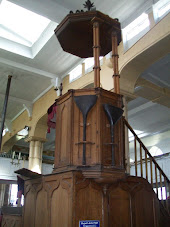

Purchasing a postcard, I made my way back out into the graveyard and the views over the headland where the ship Demeter was found with its Captain dead, the Count having already decamped.
A short walk brought me to Whitby Abbey, now run by English Heritage. The abbey is described in Mina Harker’s journal in the novel:
“Right over the town is the ruin of Whitby Abbey, which was sacked by the Danes….. It is a most noble ruin, of immense size, and full of beautiful and romantic bits; there is a legend that a white lady is seen in one of the windows”. [Mina Murray’s Journal: Chapter VI, Dracula, 1897]
The abbey also appears in ‘Marmion: A Tale of Flodden Field’, an 1808 historical romance in verse by Sir Walter Scott, where a girl was walled up alive.


Having wandered around the Abbey, finding that the Dracula cloaks that you could try on were all too small for me, Having wandered around the Abbey, finding that the Dracula cloaks that you could try on were all too small for me, I wandered around the exhibition which included several references to Bram Stoker and a First Edition of the novel.
Exiting via the gift shop, I purchased a ‘Whitby Abbey: Dracula’ fridge magnet, some more postcards, and a graphic novel version of the book which was stamped ‘Whitby Abbey’ on the inside cover. I was also impressed by the amount of Dracula merchandise available, including several blood-red alcoholic concoctions.
A ten-minute walk took me to the Dracula Experience, located next to the marina, in a building previously known as ‘The Captain’s Reading Rooms’ where Stoker undertook some of his research. This was a walk-through attraction telling the story of the novel through eight animated scenes, recorded sound effects, electronic special effects and (most terrifyingly) live actors. Having ignored all the warnings, I paid for entrance and made my way into the attraction. A short way around they had Christopher Lee’s Dracula cape in a case, but it was so dark that it was almost impossible to see (or take a photo of). Just before the end, I met the live actor who jumped out of me wearing a gargoyle mask, and then followed me silently until I moved into the next section. The experience ended with a documentary about both the original Vlad the Impaler, who influenced Stoker’s character, and the writing of the novel itself.
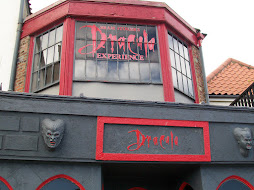

Having exited the attraction, the light hurting my eyes (I’m not a vampire, I promise!), it was a five minute walk to where I was intending to have a cup of tea – Sherlock’s Coffee House on Flowergate. Despite the external decoration, inside it was not very Sherlockian. However, upstairs was a Sherlockian Escape Room, but you needed to have booked to see this.
Having finished my tea, I returned to Whitby Station, making a slight detour to Whitby Library, where Stoker found the name ‘Dracula’ while holidaying here, picking it because he thought it meant ‘devil’ in Romanian. On the name, Stoker wrote: "Wallachians were accustomed to give [Dracula] as a surname to any person who rendered himself conspicuous by courage, cruel actions or cunning".
Back at the station, where Holmes and Watson would have arrived when in search of the Count, I caught a steam train on the North Yorkshire Moors Railway two stops to Goathland Station, which played the part of ‘Hogsmeade’ in the film, ‘Harry Potter and the Philosopher’s Stone’. (The rest of the films used a station built in studio). It features in two sequences in the film – firstly when framed against the North Eastern Railway footbridge the ‘Hogwarts Express’ pulls into Hogsmeade Station, and all the students then get off the train in their robes, being greeted by Hagrid, who rounds up the first-year students and leads them to the boats that will sail them over to Hogwarts; and secondly at the very end of the film when Harry says goodbye to Hagrid, who gifts him a photo album with a photo of his parents in it, then hugs him goodbye and then boards the train as it takes off to head back to London.


The station also featured as Aidensfield Station in the ITV programme 'Heartbeat', and a short distance away from the station was 'Scripps' Garage', now a general store and gift shop.
Catching the train back to Whitby, I had three final stops on my ‘Dracula’ tour. The first was North Terrace, reached after a ten minute walk, where Mina and Lucy both lived, and where the latter walked along barefoot on her way to the Abbey.
Just around the corner was 6 Royal Crescent where Stoker resided whilst in Whitby researching the novel, which now has a commemorative plaque. Another short distance away was the Bram Stoker Memorial Bench on Khyber Pass, overlooking all the sites of the novel.


Returning to Whitby Station, I caught a modern train for the 1½ hour journey to Middlesbrough. From here it was a ten-minute walk to Baker Street. Given the name of the street, three pubs/bars had sprung up with canonical names, beginning with ‘The Twisted Lip’, which was followed by ‘Sherlock’s’ and ‘Dr Watson’s’. The latter two did not seem to be open, but I took multiple photos of the outsides.


Winding my way down Baker Street, I came across something that I was not expecting. The end house, the gable end of the V-Edge Restaurant, featured a few early paragraphs of ‘The Five Orange Pips’. A quick Google indicated that it was created by Middlesbrough Council in 2017 (at a cost of £3,000 to taxpayers!) as one of ten pieces of classic literature including poetry and literary quotes which had been painted on walls in the town centre. The (rather tenuous) Middlesbrough link was Conan Doyle’s brother-in-law, E.W. Hornung (the creator of A.J. Raffles, the Gentleman Cracksman, who owes more than a little debt to Holmes) was born here.
Retiring to my lodgings on the other side of Teeside University, and struggling to open the door using a newly downloaded app, I jettisoned my luggage, and returned to ‘The Twisted Lip’ for a pint (of Coca-Cola), again being disappointed by a lack of canonical content inside. (The other two were still closed, and looked like they may have gone out of business).
I therefore returned back to my room to watch some television, before turning in for the night, ready for another day’s exertions.




















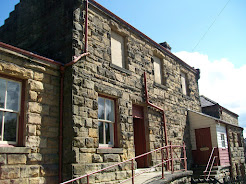

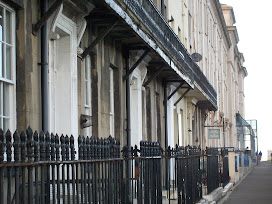

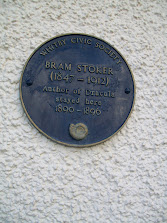
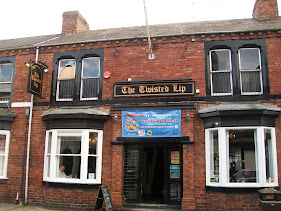


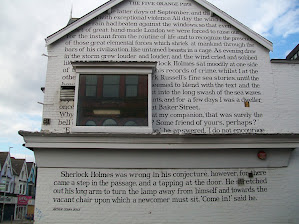


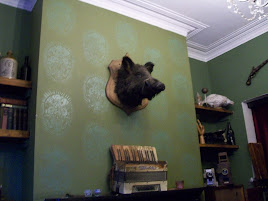
No comments:
Post a Comment